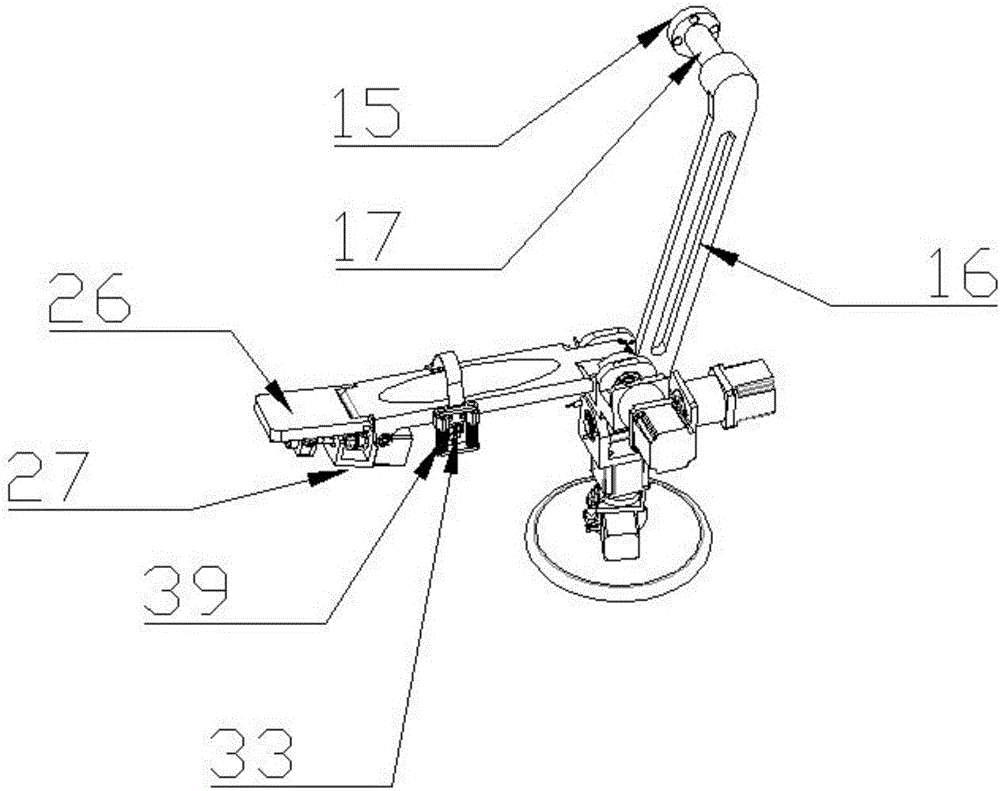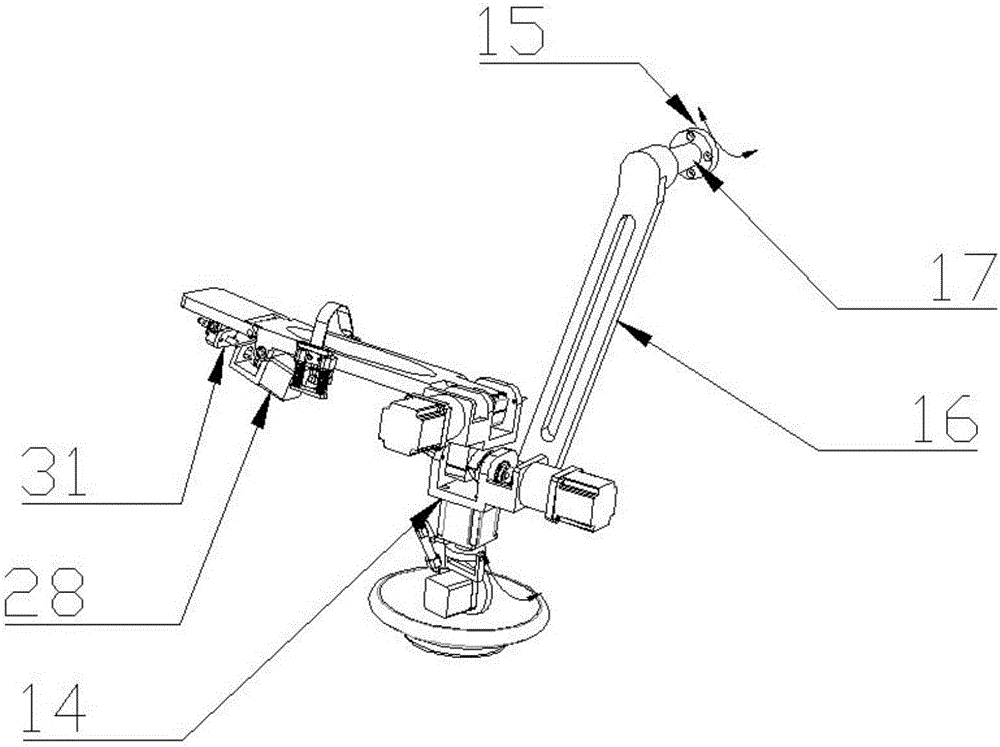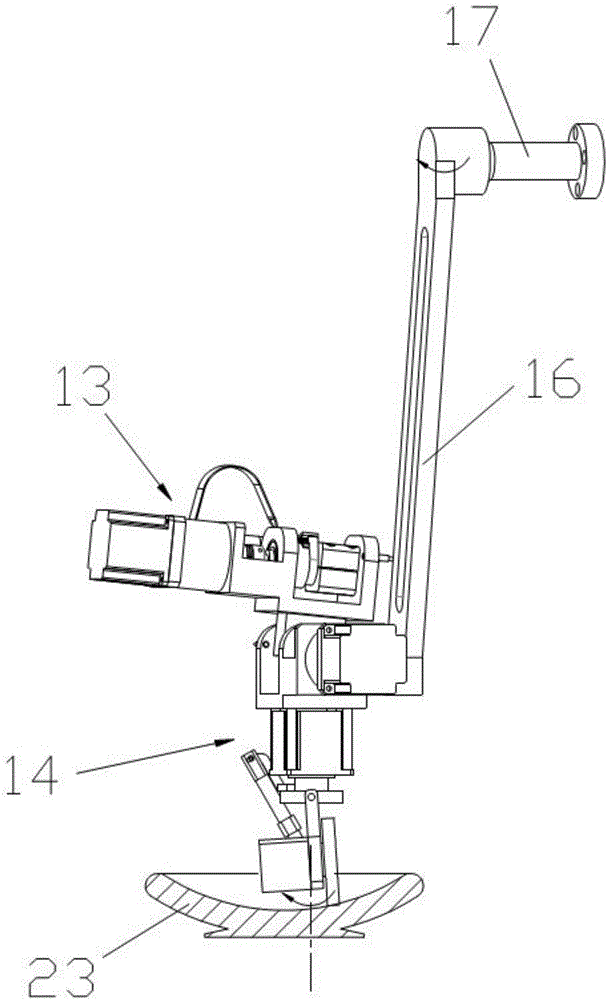Rehabilitation device capable of realizing comprehensive self-training for motion ability of upper limbs
A mobility and rehabilitation device technology, applied in sports accessories, gymnastics equipment, passive exercise equipment, etc., can solve the problems of inability to train arm mobility, unfavorable rapid recovery of patient functions, inability to train wrist joint mobility, etc., to achieve auxiliary Effects on recovery and assisting mobility
- Summary
- Abstract
- Description
- Claims
- Application Information
AI Technical Summary
Problems solved by technology
Method used
Image
Examples
Embodiment 1
[0046] Such as Figure 1-Figure 3 As shown, the rehabilitation device of the present invention that can fully and autonomously train the mobility of the upper limbs includes a support 15 and a rehabilitation training device, wherein the rehabilitation training device includes an arm training mechanism 13 for training arm mobility, and is used for training shoulders. A shoulder joint training mechanism 14 for joint mobility, a palm training mechanism for training palm mobility, an autonomous force measurement mechanism and a control system. Wherein, the bracket 15 is connected to the arm training mechanism 13 through a universal connection structure, the shoulder joint training mechanism 14 is connected to the bottom of the arm training mechanism 13 , and the palm training mechanism is installed at the end of the arm training mechanism 13 .
[0047] Such as Figure 5 As shown, the universal connection structure includes a connecting rod 16 and a universal joint, wherein one end...
Embodiment 2
[0066] Such as Figure 10 As shown, the difference between this embodiment and Embodiment 1 is that in this embodiment, the connecting rod 16 is provided with a locking screw at a position corresponding to the spherical recess 16-1, and the locking screw presses On the ball joint 17-1. Its purpose is to make the locking between the spherical recess 16-1 and the spherical joint 17-1 more firm; during use, if you want to adjust the position of the rehabilitation training device 20, loosen the locking screw, when the rehabilitation training device After the position of 20 is adjusted, then tighten the locking screw.
Embodiment 3
[0068] Such as Figure 7 As shown, the difference between this embodiment and Embodiment 1 is that in this embodiment, the number of the autonomous force measuring mechanisms is three, and these autonomous force measuring mechanisms are arranged along the length direction of the arm fixing plate 1 . The purpose is that, according to the principle of leverage, the distance between the autonomous force measuring mechanism and the first rotating shaft 4 is different, and the force required by the patient to drive the arm fixing plate 1 to bend upward is also different. The closer the distance, the greater the force required. By setting With more than two autonomous force measuring mechanisms, an appropriate autonomous force measuring mechanism can be selected to work according to the size of the patient's autonomous force, and the applicability is better.
PUM
 Login to View More
Login to View More Abstract
Description
Claims
Application Information
 Login to View More
Login to View More - R&D
- Intellectual Property
- Life Sciences
- Materials
- Tech Scout
- Unparalleled Data Quality
- Higher Quality Content
- 60% Fewer Hallucinations
Browse by: Latest US Patents, China's latest patents, Technical Efficacy Thesaurus, Application Domain, Technology Topic, Popular Technical Reports.
© 2025 PatSnap. All rights reserved.Legal|Privacy policy|Modern Slavery Act Transparency Statement|Sitemap|About US| Contact US: help@patsnap.com



